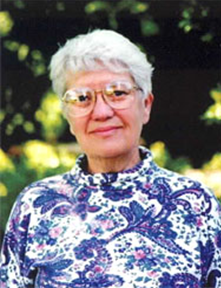- 1610: Galileo
- 1676: Ole Rømer
- 1687: Isaac Newton
- 1781: William Herschel
- 1838: Friedrich Bessel
- 1861: William and Margaret Huggins
- 1912: Henrietta Leavitt
- 1917 Einstein
- 1920: Harlow Shapley
- 1929 Edwin Hubble
- 1948: Ralph Alpher
- 1949: Fred Hoyle
- 1963: Maarten Schmidt
- 1964: Arno Penzias and Robert Wilson
- 1978: Vera Rubin and Kent Ford
- 1989: Margaret Geller and John Huchra
- 1992: John Mather and George Smoot
- 1995: Robert Williams
- 1998: Saul Perlmutter and Brian Schmidt
- 2010: Wendy Freedman
1978: Vera Rubin and Kent Ford Confirm the Existence of Dark Matter
 |
| Vera Rubin. Image courtesy of the Observatories of the Carnegie Institution for Science. |
The first inkling of dark matter, the mysterious material that makes up most of the universe, came in 1933 when Fritz Zwicky examined the mass of the Coma galaxy cluster and found that it was more massive than expected based on its luminosity. He proposed that something else was there, which he dubbed dark matter; but the idea was ignored.
In the 1960s, Rubin and Kent Ford utilized a powerful new spectrograph, developed by Ford, which enabled them to study the orbital speeds of stars and gas at different distances from the center of the Andromeda galaxy, building on a methodology originated by Zwicky. Much to their surprise, the speeds did not conform to Newtonian theory, which requires that objects distant from the center of mass orbit more slowly than those closer in. Instead, they found that distant stars traveled as fast as those near the center.
In the 1970s, Rubin led a team (including Ford, Norbert Thonnard, Morton Roberts, and John Graham) to observe dozens of galaxies and found that something other than the visible mass is at work. They discovered that spirals are embedded in a sphere of dark matter extending beyond the optical galaxies and that the mass of the dark matter is much larger than the mass of the visible matter. Because of Rubin’s groundbreaking work, our understanding of the inventory of mass in the universe was altered forever.